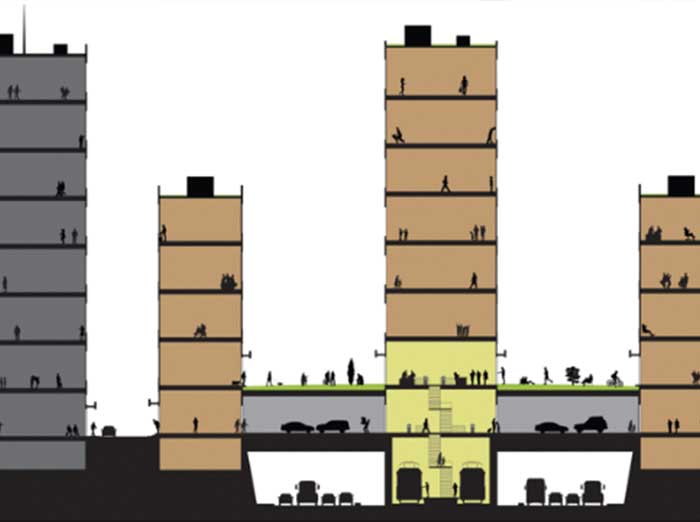Our Vision
The Minnesota Design Center works toward a future where our state and region creatively respond to the technological, environmental, social, and economic disruptions of the 21st century, to transform outdated systems into new regenerative ways of working that support life humanely, equitably, and sustainably. The 20th century saw major advances -- from the electric grid, to increasing recognition of civil rights, to vaccines, and advances in environmental science and renewable energy. Despite these gains, challenges remain -- from the need for fully realizing the vision of civil rights and equity, to eroding infrastructures, to the need for working within our planetary boundaries to sustain life into the next century. Many of these challenges, along with a worldwide pandemic are disruptions to business as usual that demand a turning point to new models. The Minnesota Design Center's work revolves around the opportunities that these turning points represent-- helping organizations and municipalities identify and develop their assets, deploying design thinking to help people think more creatively about possibilities, and using our design skills to enable communities to envision a better future for all.
The MDC uses design thinking to do this systemic work, enabling communities and organizations to develop their assets and leverage their potential. We approach design as an empathetic, creative and community-based process applicable to a wide range of human activities, in urban and rural settings and with the public and non-profit sectors.


The MDC operates as an open platform in which a diversity of people that share its vision and strategy can work in pursuit of relevant projects. Unlike most university centers that revolve around the research of a single individual with a narrow expertise, the MDC provides a place where system designers, be they affiliate faculty and practitioners, senior research fellows and MDC staff and students â€" can do their best work in an open and collaborative way.
OUR HISTORY
The Minnesota Design Center (MDC), a teaching, research and outreach center in the College of Design (CDES) at the University of Minnesota in Minneapolis, began in 1986, with a generous endowment by the Dayton Hudson Foundation, the philanthropic arm of the Dayton Hudson (now Target) Corporation. The gift came at the behest of the revered philanthropist and former CEO of the Dayton Hudson Corporation, Kenneth Dayton (1922-2003), known for his generous patronage of the arts and his keen interest in civic issues and the quality of life in the Twin Cities. In a 1980 speech Dayton stated, "It is immoral for a company to take profit out of a community without putting something back in," and the MDC continues Ken Dayton's legacy by "putting something back in" the communities we serve.
In 1988, the center - then called the Design Center for American Urban Landscape - received its first directors, William Morrish and Catherine Brown (1988-2001). Its second director, Ann Forsyth (2002-2007) changed the name to the Metropolitan Design Center, which continued through the tenure of an interim director Lance Neckar (2007-2009) and its third director, Ignacio San Martin (2009-2014). After another interim director, Mic Johnson (2014-15), Thomas Fisher, the former dean of the college, became the fourth director in July, 2015, changing the name of the center to the Minnesota Design Center to reflect the statewide nature of its work. Occupying studio space in the lower level of the 2002 Steven Holl-designed expansion of Rapson Hall, the MDC has a number of senior research fellows and affiliate professionals as well as graduate and undergraduate students working in the center, all to help this region achieve a more sustainable, equitable, livable, and resilient future.
